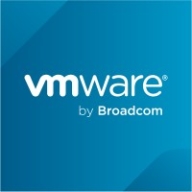

VMware Carbon Black Endpoint and Trend Vision One compete in the domain of endpoint protection and security solutions. Comparing their features, Trend Vision One appears to have the upper hand due to its comprehensive integration capabilities across multiple security layers providing centralized management.
Features: VMware Carbon Black Endpoint offers robust threat detection and real-time response actions with features like behavioral monitoring and device quarantine. It enables strong protection in cloud environments. Trend Vision One provides centralized visibility and integration across layers, allowing comprehensive attack surface management with additional features for network and cloud protection.
Room for Improvement: VMware Carbon Black Endpoint needs enhanced integration with other tools and better support for mobile devices with improved user alerts. Trend Vision One could improve its initial setup process, documentation clarity, and third-party tool integration.
Ease of Deployment and Customer Service: VMware Carbon Black Endpoint supports various cloud environments but faces challenges with slow customer service, especially during off-hours. Trend Vision One is mainly deployed in public and hybrid clouds; its technical support is responsive but not always proactive.
Pricing and ROI: VMware Carbon Black Endpoint is considered expensive with inflexible pricing models but offers a solid ROI through effective threat prevention. Trend Vision One's pricing, though high, is seen as reasonable due to its extensive capabilities, offering good value with competitive pricing among high-end solutions.
Our company went through a ransomware event, and if Trend Vision One had not stopped it, that could've closed the company's doors.
Trend Vision One has improved our ROI by 30 percent.
Thankfully, we also had cyber security insurance, and the insurance covered the incidents because, through Trend Micro and the implementation of the solution, along with the data it provided, we were able to demonstrate what had happened.
It's not just about high-level support with the chatbot; rather, when an issue occurs, we have the experts on-site and ready to respond swiftly, which is crucial.
Trend Micro supported us throughout the transition from on-prem servers or other vendors, providing top-notch service at all times.
Support responds quickly, and together we’ve been able to solve all challenges in our day-to-day operations.
I’d give scalability a 10 because nearly everything is integrated.
Our growth over the past three years has never caused performance or expansion issues.
I don't think I've encountered any issues with scalability; we're growing steadily, and I believe Trend Vision One can keep up with our demand.
Trend Vision One works exactly as intended and has never hindered our operations, feeling more a collaborator than a roadblock.
The stability is very high.
Stability is critically important for us with Trend Vision One; it is very stable, providing continuous 24/7 support.
Trend Vision One does not initially disclose to customers that they need to purchase additional licenses and pay more for integrations.
The deployment can be complex, and we'd like an easier process, especially when integrating with on-prem and cloud environments.
For XDR threat investigation, there is not enough documentation about how to search for different keywords.
I find the credit model non-transparent—you can't always tell how many licenses apply to which product.
I have seen others that are double or triple the price.
Customers who cannot afford CrowdStrike's pricing can easily opt for Trend Vision One.
The most important features of Vision One include visibility, AI integration, attack pattern analysis, predictive analytics, and centralized visibility and management across protection layers.
The most critical feature of Vision One is that it gives us a single console for threat management.
Its ability to identify unmonitored endpoints and perform log inspection, which establishes operational baselines and detects anomalies, proves invaluable for threat identification.
| Product | Market Share (%) |
|---|---|
| Trend Vision One | 2.5% |
| VMware Carbon Black Endpoint | 1.8% |
| Other | 95.7% |


| Company Size | Count |
|---|---|
| Small Business | 38 |
| Midsize Enterprise | 11 |
| Large Enterprise | 34 |
| Company Size | Count |
|---|---|
| Small Business | 31 |
| Midsize Enterprise | 9 |
| Large Enterprise | 30 |
Trend Vision One offers comprehensive protection for endpoints, networks, and email with centralized visibility. It is valued for its attack surface management, real-time threat detection, integrated management, ease of deployment, and user-friendly interface.
Trend Vision One provides a sophisticated security platform combining endpoint, network, and email protection with features like virtual patching and advanced AI capabilities. Its centralized management and integration with platforms like Office 365 and Azure make it an attractive option for organizations needing streamlined workflows and efficient risk management. While it boasts robust integrations and ease of use, enhancements are needed in reporting, tool integration, and reducing false positives. Users call for better support infrastructure, faster response times, and improved threat intelligence capabilities. Despite some complexity, its AI and ML features significantly enhance threat detection and response.
What Features Define Trend Vision One?
What Benefits Should Users Look For?
Trend Vision One is implemented in industries that require endpoint protection, ransomware defense, and incident response, being flexible for both on-premises and cloud environments. It is used to monitor servers, networks, and endpoints, providing features like email protection, behavioral detection, and threat visibility. Organizations benefit from AI and ML, improving their security posture and response capabilities.
VMware Carbon Black Endpoint enhances endpoint security with its robust EDR, threat detection, and live response features. The cloud-based architecture supports remote management and easy setup while behavioral monitoring and dynamic grouping minimize security risks.
VMware Carbon Black Endpoint is designed for those seeking comprehensive endpoint protection. With its cloud-based deployment, organizations experience streamlined remote control and simplified rollout processes. Its behavioral monitoring, incident response capabilities, and firewall integration deliver advanced security measures. Although it addresses many security challenges, areas like manual alert management, on-demand scanning, and integration with systems like AlienVault USM require refinement. Improved UI, EDR components, and flexible pricing models would enhance user satisfaction. On-premise deployment infrastructure and compatibility issues with some operating systems need attention. Enhanced reporting, container security, and multi-tenancy support are also essential for fulfilling industry needs. AI-driven analysis and threat isolation empower companies by fostering proactive management.
What are the key features of VMware Carbon Black Endpoint?
What benefits should users look for when evaluating VMware Carbon Black Endpoint?
VMware Carbon Black Endpoint finds extensive application in industries focused on stringent security requirements. Managed security service providers leverage its capabilities to deliver comprehensive protection to multiple clients worldwide. Organizations use it primarily for antivirus protection and incident management, integrating it with their existing security frameworks to strengthen endpoint visibility and real-time threat prevention. Its advanced detection and application control features make it a preferred choice in industries that prioritize robust security measures. However, it requires improvements in terms of system compatibility and customization flexibility to better serve diverse industry environments.
We monitor all Endpoint Detection and Response (EDR) reviews to prevent fraudulent reviews and keep review quality high. We do not post reviews by company employees or direct competitors. We validate each review for authenticity via cross-reference with LinkedIn, and personal follow-up with the reviewer when necessary.